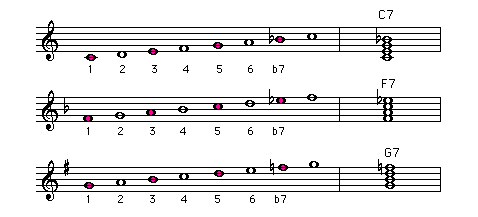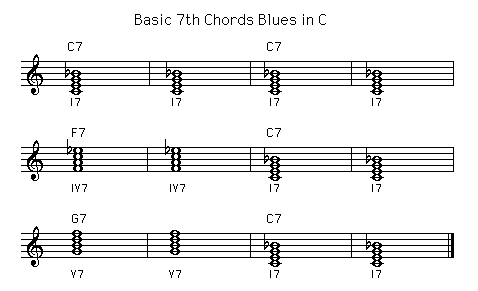(Down - Top - Links)
BL 4.1 - 7th Chords
The major triad chords are generally used for Boogie Woogie style and Rock and Roll versions of the Blues.
In Jazz Blues the dominant 7th chords are more commonly used.
The standard dominant 7th chord contains four notes.
They are the 1st (tonic), 3rd, 5th and flattened 7th note of the major scale.
For the Blues in C :
Audio 4.1

The I7, IV7 and V7 chords for the Blues in C are :
Audio 4.2

The I7, IV7 and V7 chords for the Blues in G are :
Audio 4.3

The chord progression is the same as for the basic triad blues format.
Simply replace the triads (3 note chords) by 7th chords.
Here is the basic chord progression for the Blues in C.
Audio 4.4
